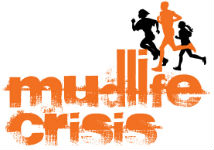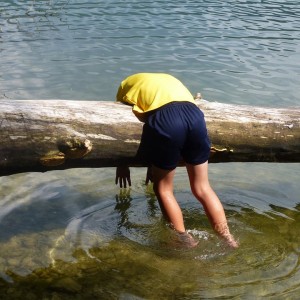Last Thursday, we talked about some of the basic endurance mistakes that folks who are new to obstacle course racing make. And let me tell you, overcoming that mistake is a big key to getting through a race more easily and with less pain. Enjoyment will be boosted, for sure.
Let’s have a little more enjoyment as we talk about some of the mistakes that racers make in regard to preparing for the obstacles themselves! After all, that’s the real draw of our sport, right? Testing yourself against the crazy ideas that race designers want to throw at us, regaining fun memories of outdoor play from our childhood, getting muddy and pushing yourself to complete the course, it’s all great stuff. And it can be made much more fun by keeping some key things in mind during training.
1. Practice makes perfect!
I’ve talked before about how having proper form and technique for an obstacle can reduce your fail rate, and if you’re in a Spartan Race, help you avoid burpees. But this also adds to the category of muscular endurance from the last post – as in, if you have good form, you don’t waste as much of your endurance!
Most obstacle course race websites give you at least a look at the obstacles they have (though they love to throw in surprises from time to time…), so research the obstacles you’re likely to face. Also, past participants of races frequently do reviews of the races they’ve been in – do a web search for that sort of thing.
Let’s take a look at some techniques that it would be a good idea to perfect your form with (I’ll have posts in the future on how to do some of this stuff more efficiently):
- Rope Climbing. This can really tax the heck out of your hands and pulling muscles, leaving you wasted for other obstacles. And thing is that if you know how to use your feet properly to climb, you can really save yourself a lot of energy that you’ll need for other obstacles.
- Wall Scaling: Climbing a wall – with or without footholds – is a common obstacle for pretty much any race. Sometimes you’ll see groups of them, one after another. It can be a real feat to get over these obstacles if you try to muscle your way over without using your body correctly.
- Crawling: Another obstacle that you’re going to find in almost every race is the barbed wire crawl, usually through mud. The distance that the barbed wire is from the ground (so to speak) is going to vary, not only from race to race but possibly within different points on the same obstacle. It’s exhausting anyway, but if you don’t have good technique for crawling it’s really a pain.
- Specialty obstacles: This is sort of a catch-all for some of the obstacles that are features at specific races: the spear throw at Spartan, for example, or the King of the Swingers at Tough Mudder. For these obstacles, it probably behooves you to check out YouTube for videos on how to do these things.
- Jumping: Huh? Jumping? Oh, yeah. There are a ton of balance and jumping obstacles in races and having the ability to land safely and accurately can save you a lot of water and burpees.
A great place to learn the best technique for many of these more natural types of obstacles is MovNat. MovNat, which I have mentioned before, is a movement philosophy that breaks down basic movements that humans have done throughout their evolution (but that we have lost through modern living) and helps us re-learn how to do them. Getting proficient in the movements themselves is important, we don’t want to get in shape doing things the wrong way because in many cases you’re getting your body accustomed to doing things wrong, which can lead to injury.
There are also lots of gyms that can teach you to do these obstacles – as the OCR world gets bigger, more fitness experts are creating programs just for our sport.
2. Work the grip!
This is a big Achilles Heel of mine. Grip strength has let me down in at least two races that I’ve run, and I’m determined to not let it happen again. You’ll find that the rest of your body can be doing just fine, but if you’re hands and forearms aren’t in good shape then you’re going to find yourself in the mud, or doing penalty burpees a lot more than you’d like.
As we talked about a couple weeks ago at OCRChat, the rise in popularity of shows like American Ninja Warrior is causing obstacles inspired by these shows to show up in our sport. It’s seriously adding to the fun, don’t get me wrong, but it’s also adding a challenge that a lot of people aren’t ready for. Modern living doesn’t give us a whole lot of opportunity to work the grip, so taking time to do so is key if you want to get through some of these obstacles.
The other thing about this is that most of the races I’ve been in seem to group the grip obstacles together to some extent, making it seem even harder. And then you add some of the rope-based obstacles that aren’t necessarily grip challenges per se, but still are more work than we see on a normal day… and yes, grip is key.
There are basically three types of grip – crush grip (which you might use on a rope climb), support grip (monkey bars or various carrying obstacles are a good example here), and pinch grip (less encountered in a race but still valuable to train). This Breaking Muscle article has some good ideas for how to train these grips.
I’ve mentioned before that one of the best ways to get your grip in gear is simply to hang. Find a pull-up bar, tree branch, swing set, fence, whatever and just hang there for as long as you can a few times a day. Trying this from a variety of bars, branches, ropes, and whatever else you can find is the best idea. If you want to incorporate pull-ups into this via a greasing-the-groove methodology, feel free. It’ll never hurt, obviously.
Another simple way to train grip is to simply alternately squeeze and stretch your hands repeatedly throughout the day. Close your hands in as tight a fist as you can manage, hold for a second, then open your hand and stretch it our with equal force for a second. Repeat in sets of ten throughout the day. Super simple, you can do it anywhere, but surprisingly effective.
Exercises like fingertip push-ups are also very good for grip and forearm strength (a lot of grip strength comes from the forearm).
3. Crawl, bend, and squat a lot!
The other big place that a lot of people have problems with in a race, as a general theme, seems to be in crawling obstacles. They get under some wire, or into the mud, or into an “over-under” type obstacle (climb over a log, crawl under a log, rinse and repeat) and it wears them out. It’s a good idea to work on this sort of thing regularly.
Crawling is easy. I’ve posted videos (as in my Five Movements for OCR post from a while back) about that, but it’s good to practice these movements regularly (at least weekly). Practice front crawls, back crawls, low crawls, and high crawls. MovNat will have a lot of these movements as well.
Bend at the waist a lot. Put a bar or rope suspended at just about waist height, and practice bending and stepping underneath it. Put one leg under the bar, then squat/bend at the waist to get under it. Get used to that movement.
And finally, squat as much as you can. It’s the natural human rest position, but it’s not one that people nowadays do very often. You’re told that you should never squat so low that your thighs are further than parallel to the floor. That’s bunk. But you don’t want to just drop down there all of a sudden, either.
Squat down as far as you can, comfortably. Try to keep your feet flat on the ground, but if you can’t, raise your heels by resting them on a book, board, uneven sidewalk, what have you. Try to relax into the position as much as possible, but make sure you’re feeling a good stretch in your lower back and in your knees. It should go without saying that if your knees hurt, then stop. But this is a fantastic stretch and strength builder, and will create a lot of mobility for you in your knees, ankles, and hips.
So that’s it for the obstacles. Next time we’ll talk about basic gear for your first OCR and more mistakes that new racers make in that regard.
What are the basic obstacle-based exercises and movements you’d recommend? Share below or on our message board!







